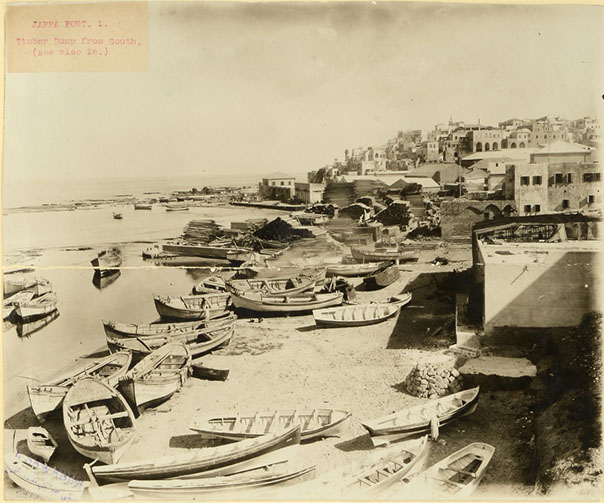Back in August 2018, we published a blog on a volunteer project to catalogue Colonial Office correspondence on Palestine and Mesopotamia. These were League of Nations mandates awarded to Britain after the First World War. The administration of the mandates generated a great deal of correspondence, much of it in now at The National Archives in series CO 733 (Palestine) and CO 730 (Mesopotamia). Since then, the volunteers have made much progress, so we thought it time for an update.
A small team of volunteers have completed all 125 uncatalogued volumes of the Palestine correspondence, creating around 8,000 item descriptions. Descriptions for the first 75 volumes have been released onto Discovery, the rest to follow by the middle of the year. The volunteers have also made substantial inroads into the Mesopotamia series, having completed 20 out of 105 volumes. We are extremely grateful to the volunteers, without whom the project would not be possible.

These series include important documents on a key period in the history of the Middle East, but the clerks in the Colonial Office registry left present day readers with a bit of a problem. They circulated the documents in folders or ‘dockets’, which officials used to make notes and policy recommendations. Once officials returned the documents to registry, the clerks had them bound into volumes in date order, but irrespective of topic. The volumes have only general titles, like ‘despatches’ and ‘offices’.

In 1926, the Colonial Office began opening subject files. These have titles such as ‘Illegal immigration: intelligence reports’. While the titles are fairly general in nature, they do provide a reasonable means of searching the catalogue and locating useful documents.
This left a rather misleading situation, in which five years of correspondence between 1921 and 1926 were ‘hidden’ from keyword searching. The purpose of the project is therefore to add description for the individual items and thus make them searchable.
This was a formative period in the history of the Middle East. Many records in CO 733 concern the establishment of the British administration in Palestine and such key topics as Jewish immigration and Jewish-Arab relations. The politics of Transjordan (which became independent Jordan in 1946) also feature prominently in the correspondence. In particular, there is a good deal of material on the role of Emir Abdullah, later King of Jordan and a close ally of Britain.
One theme which became apparent and of which I was really unaware was the very extensive infrastructural development which was undertaken in Palestine during these early years. Topics covered include the electrification of towns, the construction of harbours at Jaffa and Haifa and the development of roads and railways.

The series also covers the period during which Tel Aviv grew from what was really a suburb of Jaffa into becoming a city. The records contextualise some of the photographs of Palestine that are held in other records series. For example, this photograph from the Colonial Office photographic collection shows the beginning of work on the construction of Tel Aviv.

Britain’s mandate in Palestine came to an end in 1948, when Israel became an independent state, but the Mesopotamia mandate was short-lived. It lasted only until 1932, when Iraq became an independent kingdom.
The British administration was short, but it was also turbulent, as it faced fierce resistance from many elements within Mesopotamia. The British government decided in favour of indirect rule and chose Faisal ibn Husayn, Abdullah’s brother, as its candidate for ruler. He became King Faisal I of Iraq in August 1921, following a plebiscite. The volunteers are some little way into revealing the content of these volumes, but it is clear that these political events feature prominently.
We are expecting the Mesopotamia project to be completed by the end of 2021, and it will be very pleasing to see a fully searchable series. In the digital age, the creation of catalogue detail remains an essential means of improving access to the records. However, it is also a labour intensive business and much of it would be impossible without the help of volunteers. I would again like to thank our volunteers for the time and enthusiasm that they have brought to the project.

Will be very interested in the Mesopotamia work as my Grandfather Captain Hubert Greene of the RGA was in Mesopotamia from 1917 to 1921 with the Army. The last 2 years he was part of the Iraq Administration according to his record of service in the India Office List . In civilian life was employed in the Post and Telegraph Dept , India.